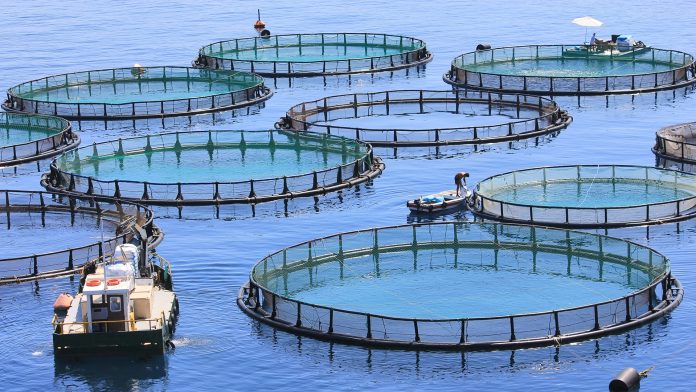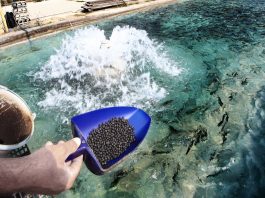Scientists at Nanyang Technological University, Singapore (NTU Singapore) have created a novel biomaterial made from aquaculture waste that could help in bone repair.
Currently, the aquaculture industry produces a vast amount of waste, and as the industry moves towards greater sustainability, the challenge of aquaculture waste – such as bullfrog skin and fish scales – must be tackled.
The porous biomaterial comprises of the same compounds that are prevalent in bones and functions as a framework for bone-forming cells to adhere to and multiply, leading to the generation of new bone.
By conducting various laboratory experiments, the researchers discovered that human bone-forming cells seeded into the biomaterial scaffold, succeeded in attaching themselves and began multiplying. They also discovered that the probability of the biomaterial prompting an inflammatory response is minimal.
The team’s research was published in the journal Materials Science and Engineering C.
This biomaterial scaffold could be utilised to aid the regeneration of bone tissue lost as a result of diseases or injuries, such as jaw defects from trauma or cancer surgery. It may also help bone growth around surgical implants like dental implants.
The team are hopeful that the biomaterial is a favourable alternate option to the current practice of using a patient’s own tissues, which necessitates further surgery for bone extraction.
Simultaneously, the manufacture of this biomaterial will help to overcome the challenge of aquaculture waste, explained Assistant Professor Dalton Tay of the NTU School of Materials Science and Engineering (MSE), who led the study.
Each year, more than 20 million tonnes of fishery by-products – like fins, scales, and skins – is abandoned. In Singapore, the annual consumption of frog flesh and fish is approximately 100 million kilograms, making bullfrog skin and fish scales two of Singapore’s largest aquaculture waste side streams.
Assistant Professor Dalton Tay commented: “We took the ‘waste-to-resource’ approach in our study and turned discards into a high-value material with biomedical applications, closing the waste loop in the process. Our lab studies showed that the biomaterial we have engineered could be a promising option that helps with bone repair. The potential for this biomaterial is very broad, ranging from repairing bone defects due to injury or ageing, to dental applications for aesthetics. Our research builds on NTU’s body of work in the area of sustainability and is in line with Singapore’s circular economy approach towards a zero-waste nation.”
Study co-author, Director of the Environmental Chemistry and Materials Centre, Nanyang Environment and Water Research Institute (NEWRI), Professor Matthew Hu Xiao, explained: “These waste streams can also be converted into green chemicals and materials for environmental remediation and timely treatment can reduce wastewater contamination.”
Clinical Associate Professor Goh Bee Tin, Director for Research at the National Dental Centre Singapore, who was not involved in the study, said: “The National Dental Centre Singapore is excited about the use of bullfrog skin as a natural biomaterial for tissue regeneration. We see many potential dental applications ranging from the regeneration of gum tissues in periodontal disease, to bone for placement of dental implants, to jawbone following tumour surgery. Obviating the need for additional bone harvesting surgery also translates to time and cost savings, and less pain for patients.”
Ms Chelsea Wan, Director, Jurong Frog Farm added: “The aquaculture industry is an important avenue to meet the global growing demand for safe and quality seafood, but a big challenge we face is the huge wastage and downcycling of valuable aquatic resources. In Singapore, the combined annual consumption of frog flesh and fish is estimated to be around 100 million kilograms, making bullfrog skin and fish scales two of the largest aquaculture waste side streams here. The integration of multiple seafood waste streams into a single high value product is a leading example of sustainable innovation for the aquaculture industry.”
Going forward, the scientists will be conducting further investigations into the long-term safety and efficiency of the biomaterial, and aim to bring their aquaculture waste based product closer to commercialisation.









